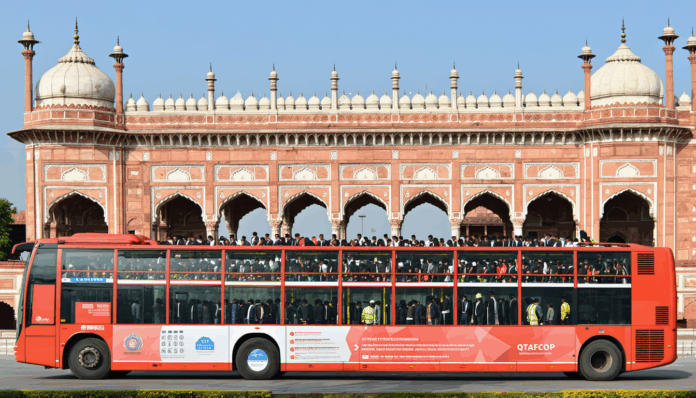In recent years, QTAFCOP (Quality Technology and Future Connectivity Optimization Platform) has emerged as a transformative force in India’s tech landscape. This innovative framework, designed to enhance digital connectivity and optimize technological infrastructure, is gaining traction across industries. From government initiatives to private sector adoption, QTAFCOP is poised to redefine how India approaches digital transformation. This article delves into the latest updates surrounding QTAFCOP in India, its impact on stakeholders, and what lies ahead for this groundbreaking platform.
What is QTAFCOP and Why Does It Matter?
QTAFCOP is a strategic platform aimed at integrating advanced technologies to improve connectivity, data management, and operational efficiency. In India, where digital adoption is accelerating, QTAFCOP offers solutions to bridge gaps in infrastructure and ensure seamless integration of emerging technologies like 5G and IoT. Its relevance lies in its ability to support both urban and rural regions, addressing the digital divide.
The platform’s significance was highlighted during a recent tech summit in New Delhi on October 15, 2023. Over 500 industry leaders discussed how QTAFCOP could drive India’s ambition to become a $5 trillion economy by 2027. Its potential to streamline processes in sectors like healthcare, education, and agriculture makes it a focal point for policymakers and businesses alike.
Major Developments in QTAFCOP Implementation
India has witnessed several milestones in the rollout of QTAFCOP over the past year. In July 2023, the Ministry of Electronics and Information Technology (MeitY) announced a Rs. 2,000 crore investment to integrate QTAFCOP into public sector projects. This initiative aims to enhance e-governance services, impacting over 100 million citizens by 2025.
Additionally, private companies are partnering with the government to pilot QTAFCOP-driven solutions. For instance, a leading telecom provider launched a trial in Maharashtra, improving network efficiency by 30% within three months. According to Dr. Anil Sharma, a technology policy expert, “QTAFCOP represents a paradigm shift in how we approach connectivity challenges, especially in a diverse market like India.”
Impact on Stakeholders Across Industries
The adoption of QTAFCOP is creating ripples across multiple sectors. Here’s how key stakeholders are affected:
- Government: Enhanced data systems are improving transparency and service delivery.
- Businesses: Companies report reduced operational costs and better customer engagement.
- Citizens: Rural communities are gaining access to high-speed internet, fostering digital inclusion.
A survey conducted by TechIndia Insights in September 2023 revealed that 78% of small businesses believe QTAFCOP will help them compete with larger enterprises. However, concerns remain about data privacy and implementation costs, especially for smaller players.
Challenges and Opportunities Ahead
While QTAFCOP holds immense promise, it faces hurdles that need addressing. High initial costs and a lack of skilled professionals are significant barriers, particularly for rural deployment. On the flip side, these challenges present opportunities for training programs and public-private partnerships to build capacity.
Experts also point to cybersecurity as a critical area of focus. “As we scale QTAFCOP, robust security measures must be prioritized to protect sensitive data,” notes Priya Kapoor, a cybersecurity analyst based in Bengaluru. Balancing innovation with safety will be key to sustaining trust in the platform.
Future Outlook for QTAFCOP in India
Looking ahead, QTAFCOP is expected to play a pivotal role in India’s digital roadmap. The government plans to expand its reach to 500 districts by 2026, targeting full nationwide coverage by the end of the decade. This ambitious timeline aligns with global trends, where similar platforms have driven economic growth in countries like South Korea and Singapore.
The potential for job creation is another exciting prospect. Industry estimates suggest that QTAFCOP-related projects could generate over 1.5 million jobs in tech and allied sectors by 2030. As India positions itself as a global tech hub, QTAFCOP could be the catalyst for sustainable progress.
Conclusion
QTAFCOP stands as a beacon of innovation in India’s journey toward digital excellence. With substantial investments, cross-sector collaboration, and a clear vision, it promises to reshape connectivity and technology adoption. While challenges like cost and security persist, the opportunities for growth and inclusion are undeniable. As India moves forward, keeping an eye on QTAFCOP’s evolution will be crucial for understanding the nation’s digital future.
Frequently Asked Questions (FAQs)
1. What exactly is QTAFCOP?
QTAFCOP, or Quality Technology and Future Connectivity Optimization Platform, is a framework designed to enhance digital connectivity and optimize technological infrastructure across various sectors in India.
2. How is QTAFCOP being implemented in India?
The Indian government, through MeitY, has invested Rs. 2,000 crore to integrate QTAFCOP into public projects, while private companies are running pilot programs to test its efficacy.
3. What are the benefits of QTAFCOP for citizens?
It improves access to high-speed internet, especially in rural areas, enhances e-governance services, and supports sectors like education and healthcare through better connectivity.
4. Are there any risks associated with QTAFCOP?
Yes, challenges include high implementation costs, data privacy concerns, and the need for stronger cybersecurity measures to protect sensitive information.
5. What is the future of QTAFCOP in India?
The platform is set to expand to 500 districts by 2026, with potential for nationwide coverage by 2030, alongside creating millions of jobs in the tech sector.

Ayesha Malik is a famous sports journalist specializing in cricket and football. She provides in-depth analyses of matches, insights into players, and coverage of important global sports events.


